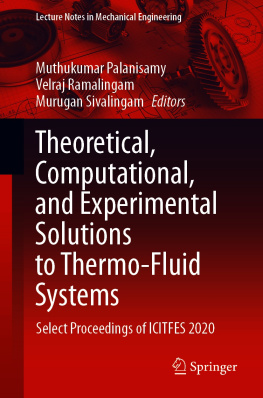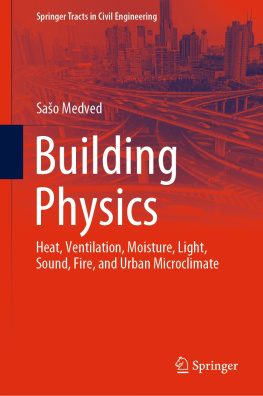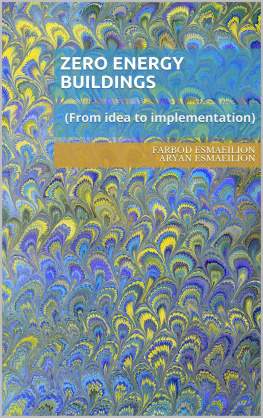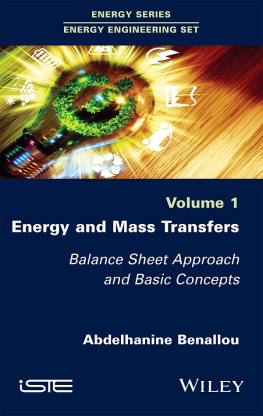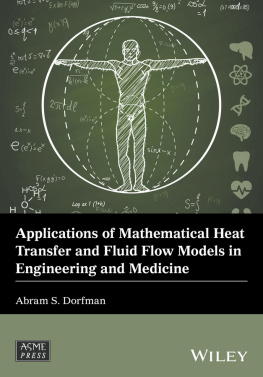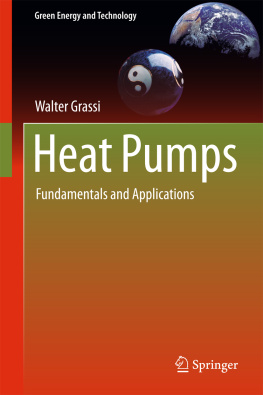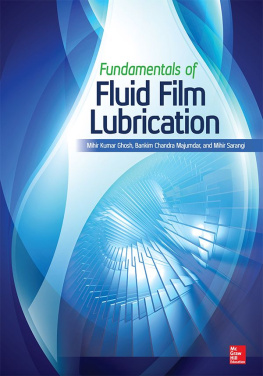Parham A. Mirzaei - Computational Fluid Dynamics and Energy Modelling in Buildings: Fundamentals and Applications
Here you can read online Parham A. Mirzaei - Computational Fluid Dynamics and Energy Modelling in Buildings: Fundamentals and Applications full text of the book (entire story) in english for free. Download pdf and epub, get meaning, cover and reviews about this ebook. City: Hoboken, year: 2022, publisher: Wiley-Blackwell, genre: Science. Description of the work, (preface) as well as reviews are available. Best literature library LitArk.com created for fans of good reading and offers a wide selection of genres:
Romance novel
Science fiction
Adventure
Detective
Science
History
Home and family
Prose
Art
Politics
Computer
Non-fiction
Religion
Business
Children
Humor
Choose a favorite category and find really read worthwhile books. Enjoy immersion in the world of imagination, feel the emotions of the characters or learn something new for yourself, make an fascinating discovery.

- Book:Computational Fluid Dynamics and Energy Modelling in Buildings: Fundamentals and Applications
- Author:
- Publisher:Wiley-Blackwell
- Genre:
- Year:2022
- City:Hoboken
- Rating:3 / 5
- Favourites:Add to favourites
- Your mark:
Computational Fluid Dynamics and Energy Modelling in Buildings: Fundamentals and Applications: summary, description and annotation
We offer to read an annotation, description, summary or preface (depends on what the author of the book "Computational Fluid Dynamics and Energy Modelling in Buildings: Fundamentals and Applications" wrote himself). If you haven't found the necessary information about the book — write in the comments, we will try to find it.
A Comprehensive Overview of the Fundamentals of Heat and Mass Transport Simulation and Energy Performance in Buildings
In the first part of Computational Fluid Dynamics and Energy Modelling in Buildings: Fundamentals and Applications, the author explains the fundamentals of fluid mechanics, thermodynamics, and heat transfer, with a specific focus on their application in buildings. This background knowledge sets the scene to further model heat and mass transport in buildings, with explanations of commonly applied simplifications and assumptions.
In the second part, the author elaborates how the fundamentals explained in part 1 can be used to model energy flow in buildings, which is the basis of all commercial and educational building energy simulation tools. An innovative illustrative nodal network concept is introduced to help readers comprehend the basics of conservation laws in buildings. The application of numerical techniques to form dynamic simulation tools are then introduced. In general, understanding these techniques will help readers to identify and justify their choices when working with building energy simulation tools, rather than using default settings.
Detailed airflow information in buildings cannot be obtained in building energy simulation techniques. Therefore, part three is focused on introducing computational fluid dynamics (CFD) as a detailed modelling technique for airflow in buildings. This part starts with an introduction to the fundamentals of the finite volume method used to solve the governing fluid equations and the related challenges and considerations are discussed. The last chapter of this part covers the solutions to some practical problems of airflow within and around buildings.
The key aspect of Computational Fluid Dynamics and Energy Modelling in Buildings: Fundamentals and Applications is that it is tailored for audiences without extensive past experience of numerical methods. Undergraduate or graduate students in architecture, urban planning, geography, architectural engineering, and other engineering fields, along with building performance and simulation professionals, can use this book to gain additional clarity on the topics of building energy simulation and computational fluid dynamics.
Parham A. Mirzaei: author's other books
Who wrote Computational Fluid Dynamics and Energy Modelling in Buildings: Fundamentals and Applications? Find out the surname, the name of the author of the book and a list of all author's works by series.

